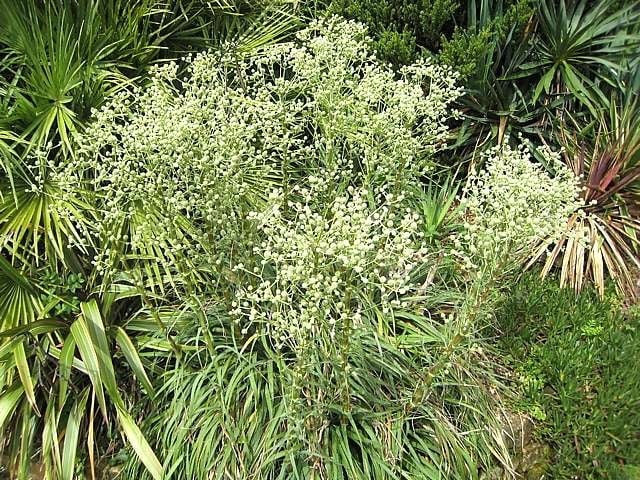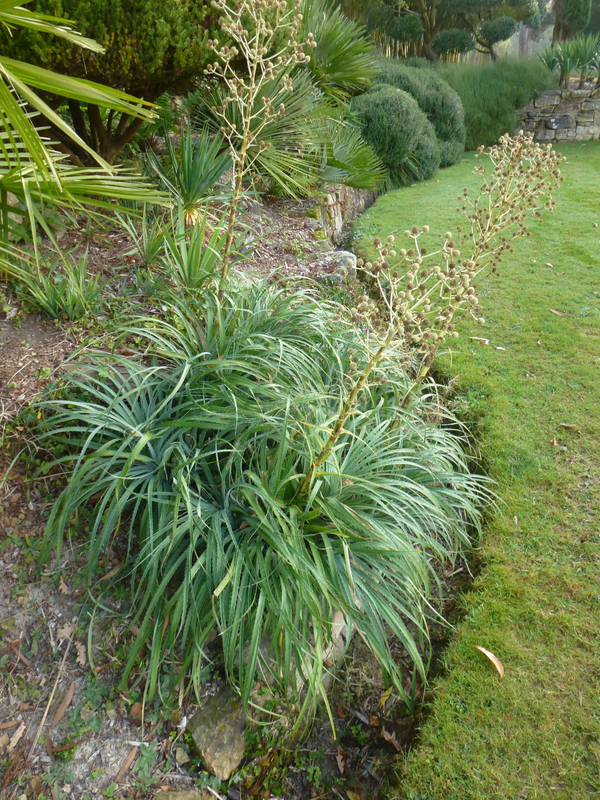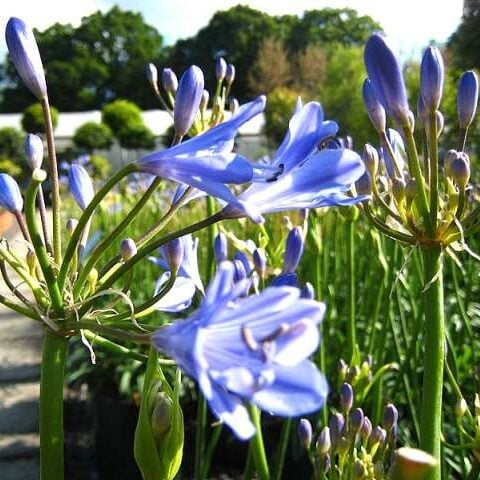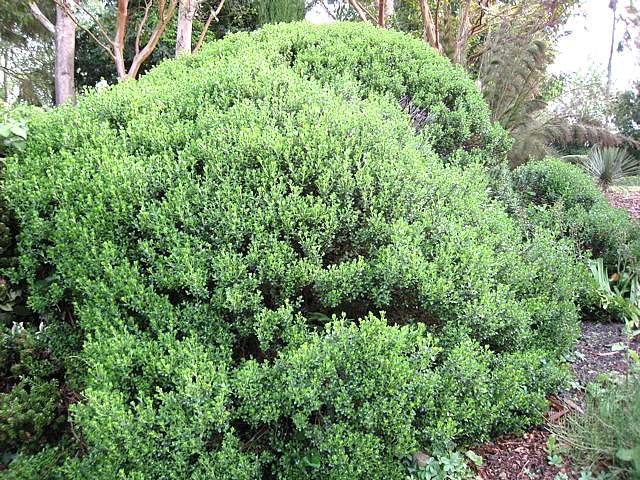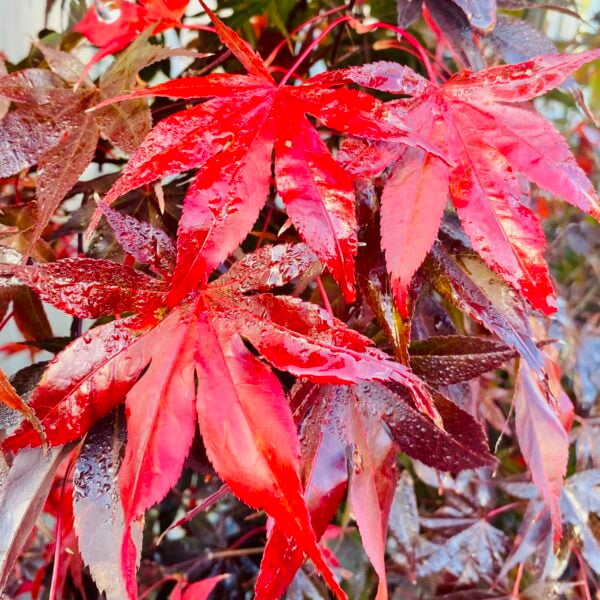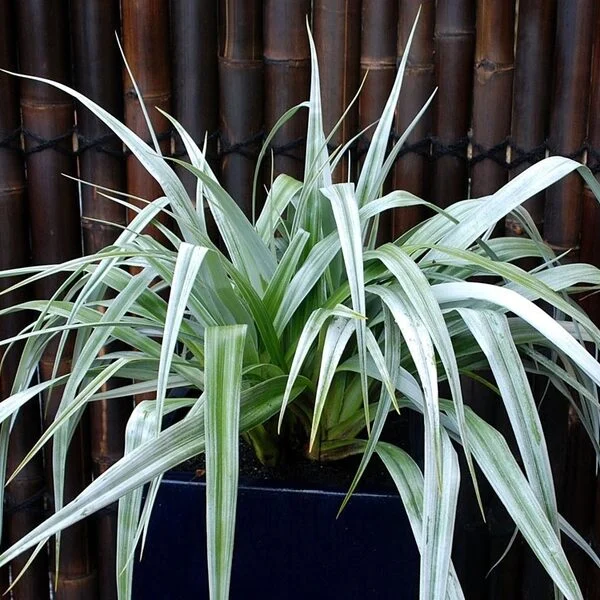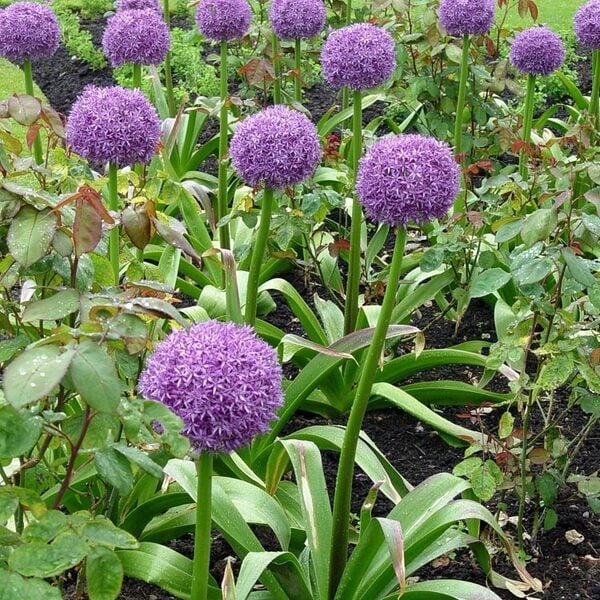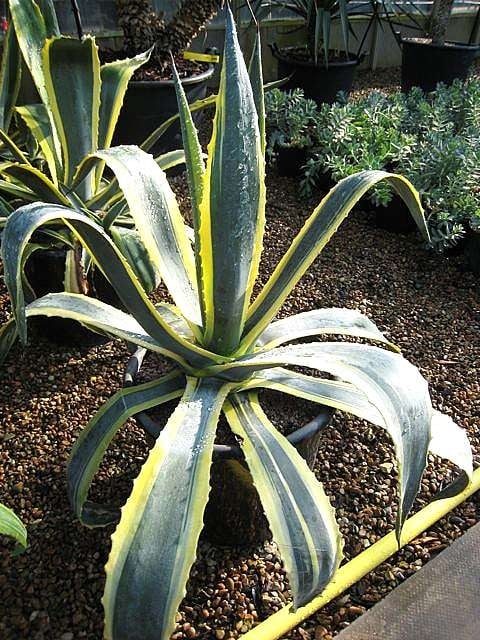Eryngium horridum (The Nice Eryngium)
A little known Puya lookalike for your spiky areas. Easy to grow and more evergreen than most Eryngiums. Clumps around 2ft across. Please contact us for stock availability and sizes.

Hardiness level Amber
We found this growing at Wakehurst Place in Sussex in 1989. Nobody seemed to know much about it but I liked it and through the good offices of the splendid Tony Schilling (the curator at the time), we acquired some seed and have grown it ever since. The little we learned was : that it was an introduction through Kew Gardens from Mexico and that the one they had might have been the only one in captivity outside of Mexico. It's still little known nearly 30 years on. There's a very brief account of this plant in Wikipedia written in Danish which I have yet to get round to translating. It's hardy (outside at Cooks Farm for nearly 30 years) and neat and spiky and much more evergreen than many of the Eryngiums. As with much herbaceous stuff, not a bad idea to cut it to the ground from time to time so you get nothing but new foliage in the summer. Each rosette reaches less than 1ft across. Full sun and reasonable drainage seem its only requirements. The taxonomists often baffle us. What's horrid about it for heaven's sake?
Additional Information |
|
|---|---|
| Soil Type | |
| Light | |
| Plant Type | |
| Continent of Origin | |
| Specialist Plants | |
| Features | |
| Situation | Coastal, Exposed (To wind and sun), Mild City Gardens, Plants for Pots, Sheltered Garden |
| Flower Colour | |
| Hardiness | |




